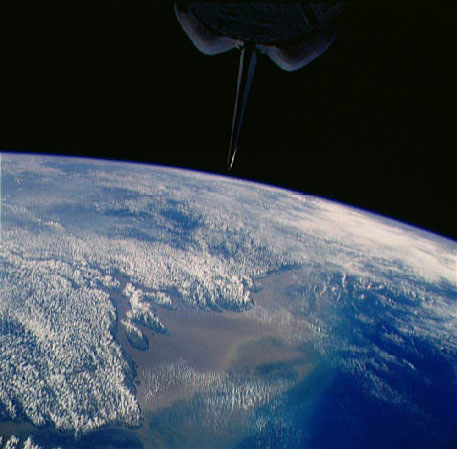Amazon River Dated to 11 Million Years Old

The Amazon River and its current lengthy and transcontinental bed is about 11 million years old, according to a new study. Previously, the river's exact age was unknown, researchers say.
The Amazon, which starts in the Andes and flows easterly into the Atlantic Ocean, originated as a transcontinental river back in the Miocene Epoch between 11.8 million and 11.3 million years ago, and took its present shape about 2.4 million years ago, according to the study by Carina Hoorn of the University of Amsterdam, Jorge Figueiredo of the University of Liverpool, England, and colleagues.
The new estimate won't set any age records for rivers — Earth's oldest rivers are hundreds of millions of years old.
In fact, while the Amazon is said by some to be Earth's longest river, it is "quite a youngster among rivers," Hoorn told LiveScience. "For comparison, the New River in North America and the Nile in Africa are thought to be several hundred million years old. The reason for this is that rivers are controlled by their source area. Rivers are as old as the mountains in the hinterlands, one could say. The Andes uplifted mostly in the past 12 million years and hence the formation and shifting of drainage patterns." The research, published in the July issue of the journal Geology, was undertaken by Petrobras, the national oil company of Brazil, in cooperation with the University of Amsterdam.
The whole history of the fluvial drainage system that eventually became the transcontinental Amazon River that we know today is older than 11 million years, Figueiredo said. The new estimate dates only the onset of the Amazon as a transcontinental river. A "proto-river" flowed much earlier in geologic time, but only on the eastern part of the Amazon Region, Figueiredo said. A more ancient predecessor to the Amazon actually flowed backward at times, from east to west, according to one unpublished study.
The current study focused on samples taken from two boreholes drilled by Petrobras near the mouth of the Amazon. One of the boreholes was 2.6 miles (4.2 km) below sea level. Until recently, the Amazon Fan, a sediment column of around 6 miles (10 km) thick, was difficult to age based on the jumble of local rocks, and scientific drilling expeditions could only reach a fraction of it, Hoorn said.
The new analysis of the borehole samples allowed the researchers to reconstruct the history of the Amazon River, and provides insights into the history of the river and the fan.
Sign up for the Live Science daily newsletter now
Get the world’s most fascinating discoveries delivered straight to your inbox.
This research also has implications for understandings of South American paleogeography and the evolution of aquatic organisms in Amazonia and the Atlantic coast, Hoorn said. Sediment aprons in the proximity of major rivers often hold continuous records of terrestrial material accumulated by the river over time, she said. These records can provide insights into the historic climate and geography of the land.
- Video – Lost Civilization of the Amazon Rainforest
- Vote for Your Favorite New Wonder of the World
- Gallery: Scenic Waterfalls
Robin Lloyd was a senior editor at Space.com and Live Science from 2007 to 2009. She holds a B.A. degree in sociology from Smith College and a Ph.D. and M.A. degree in sociology from the University of California at Santa Barbara. She is currently a freelance science writer based in New York City and a contributing editor at Scientific American, as well as an adjunct professor at New York University's Science, Health and Environmental Reporting Program.











